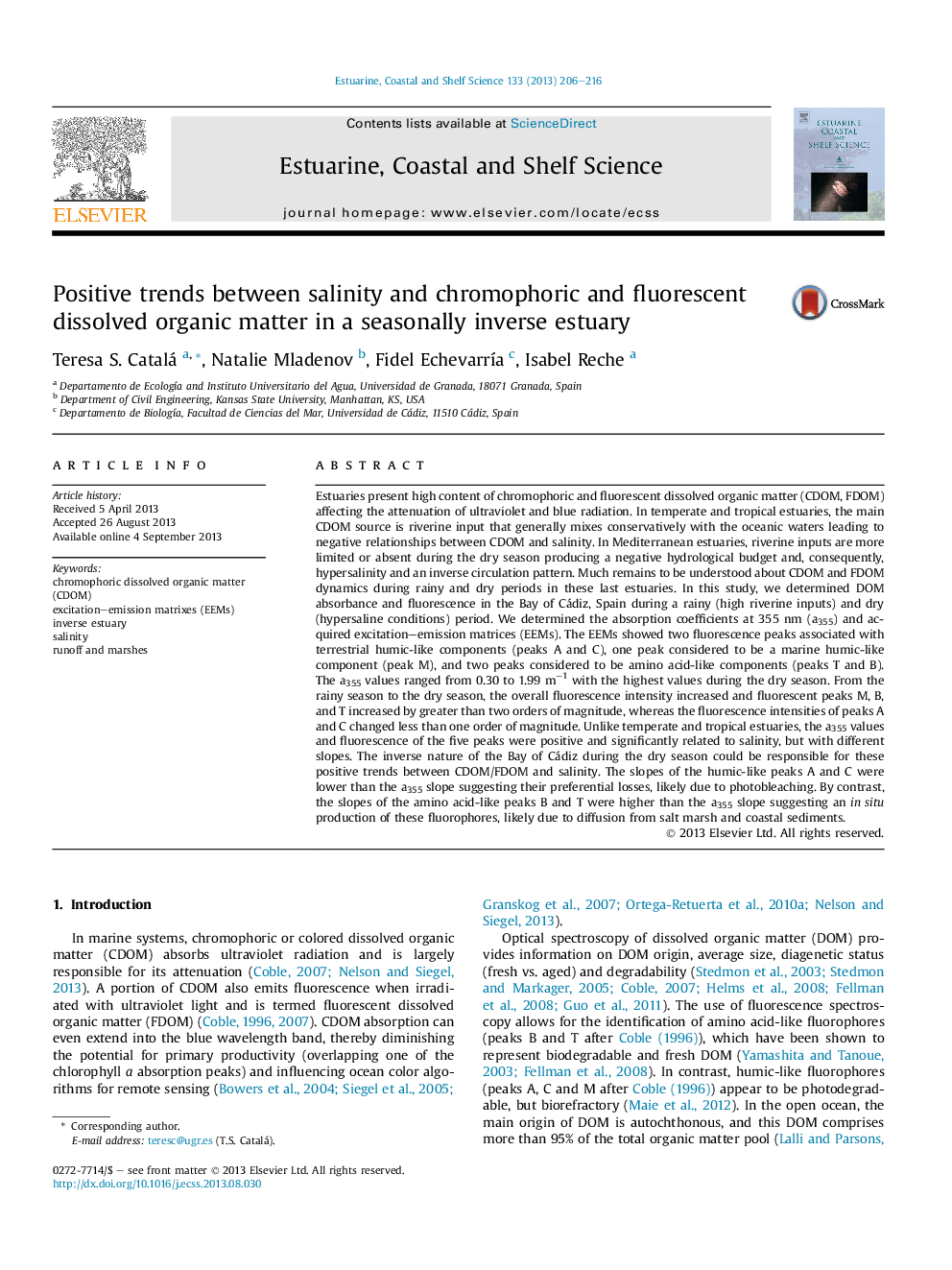| Article ID | Journal | Published Year | Pages | File Type |
|---|---|---|---|---|
| 6385043 | Estuarine, Coastal and Shelf Science | 2013 | 11 Pages |
Abstract
Estuaries present high content of chromophoric and fluorescent dissolved organic matter (CDOM, FDOM) affecting the attenuation of ultraviolet and blue radiation. In temperate and tropical estuaries, the main CDOM source is riverine input that generally mixes conservatively with the oceanic waters leading to negative relationships between CDOM and salinity. In Mediterranean estuaries, riverine inputs are more limited or absent during the dry season producing a negative hydrological budget and, consequently, hypersalinity and an inverse circulation pattern. Much remains to be understood about CDOM and FDOM dynamics during rainy and dry periods in these last estuaries. In this study, we determined DOM absorbance and fluorescence in the Bay of Cádiz, Spain during a rainy (high riverine inputs) and dry (hypersaline conditions) period. We determined the absorption coefficients at 355Â nm (a355) and acquired excitation-emission matrices (EEMs). The EEMs showed two fluorescence peaks associated with terrestrial humic-like components (peaks A and C), one peak considered to be a marine humic-like component (peak M), and two peaks considered to be amino acid-like components (peaks T and B). The a355 values ranged from 0.30 to 1.99Â mâ1 with the highest values during the dry season. From the rainy season to the dry season, the overall fluorescence intensity increased and fluorescent peaks M, B, and T increased by greater than two orders of magnitude, whereas the fluorescence intensities of peaks A and C changed less than one order of magnitude. Unlike temperate and tropical estuaries, the a355 values and fluorescence of the five peaks were positive and significantly related to salinity, but with different slopes. The inverse nature of the Bay of Cádiz during the dry season could be responsible for these positive trends between CDOM/FDOM and salinity. The slopes of the humic-like peaks A and C were lower than the a355 slope suggesting their preferential losses, likely due to photobleaching. By contrast, the slopes of the amino acid-like peaks B and T were higher than the a355 slope suggesting an in situ production of these fluorophores, likely due to diffusion from salt marsh and coastal sediments.
Related Topics
Physical Sciences and Engineering
Earth and Planetary Sciences
Geology
Authors
Teresa S. Catalá, Natalie Mladenov, Fidel EchevarrÃa, Isabel Reche,
